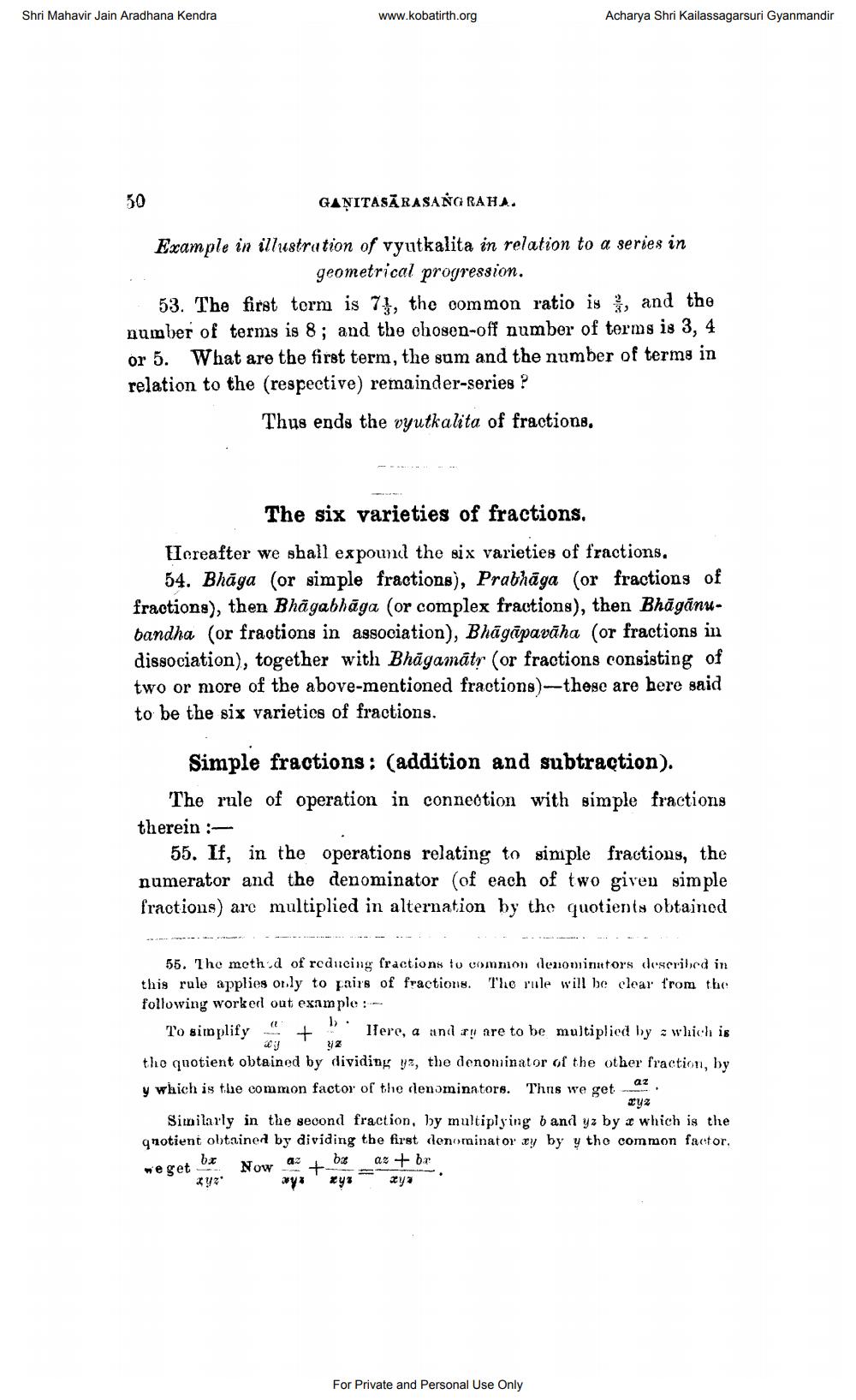________________
Shri Mahavir Jain Aradhana Kendra
www.kobatirth.org
Acharya Shri Kailassagarsuri Gyanmandir
GANITASĀRASANG RAHA.
Example in illustration of vyutkalita in relation to a series in
geometrical progression. 53. The first torm is 71, the common ratio is j, and the number of terms is 8; and the chosen-off number of terms is 3, 4 or 5. What are the first term, the sum and the number of terms in relation to the respective) remainder-series?
Thus ends the vyutkalita of fractions,
The six varieties of fractions. Hereafter we shall expound the six varieties of fractions.
54. Bhāga (or simple fractions), Prabhāga (or fractions of fractions), then Bhagabhāga (or complex fractions), then Bhāgānubandha (or fractions in association), Bhāgāpavāha (or fractions in dissociation), together with Bhāgamátr (or fractions consisting of two or more of the above-mentioned fractions)--these are here said to be the six varieties of fractions.
Simple fractions: (addition and subtraction)
The rule of operation in connection with simple fractions therein :
55. If, in the operations relating to simple fractions, the numerator and the denominator (of each of two given simple fractions) are multiplied in alternation by the quotients obtained
55. The methid of reducing fractions to commion denominators described in this rule applies only to pairs of fractions. The rule will be clear from the following worked out example :--
To simplify + llere, a andry are to be multiplied by a which is
z
the quotient obtained by dividing yz, the denominator of the other fraction, by y which is the common factor of the denominators. Thns we get 42.
Similarly in the second fraction, by multiplying band yz by a which is the qnotient obtained by dividing the first denominator xy by y the common factor, we get ox Now a + b az + br
ху xyz - ауа
For Private and Personal Use Only




